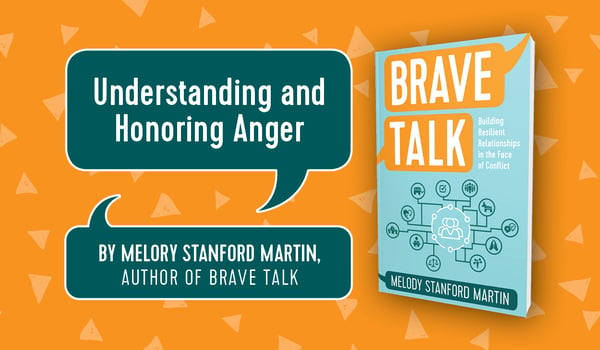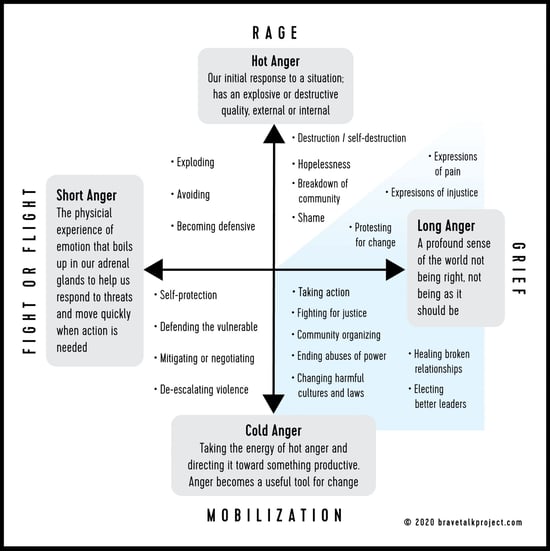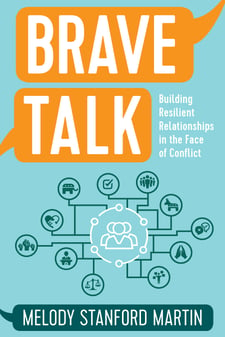It can feel disorienting and overwhelming to find ourselves in a moment of anger, especially when that anger is on a grand scale, like political unrest.
Understanding anger is challenging, let alone experiencing the emotion in the first place.
Whether we are on the frontlines or the sidelines of social change, we feel the boiling-over. We feel the deep sense that the world is not as it should be.
Anger is treated with a love-hate relationship in the U.S. context. Some of us respond well to anger; it’s an integrated part of the way we move around in the world. Others of us believe anger is destructive and counterproductive; we shy away from expressions of it because we believe it’s somehow flawed.
Understanding Anger in Cultural Contexts
Our view of anger is often culturally based. I grew up in a white pastor’s family where anger did not have much of a place. It was equated with being “mean.” We were commonly told to reframe the ways we spoke so we would sound less angry. We were taught, as it says in the Bible, that “a soft answer turns away wrath.” The subtext of these beliefs was that anger was the opposite of being rational, and expressing anger undermined our credibility. So I learned to stuff my anger down, and ignore it, and doubt it, and re-code it, and fear it. And I was taught to ignore people who were expressing anger because surely that meant they were doing something wrong.
The result was that my muscles of tolerance for angry-sounding speech were not developed: when I heard anger expressed, I could only hear tone, and not meaning.
I can say from personal experience that if you don’t have a healthy relationship with anger, you risk misunderstanding people who are in pain. You risk misunderstanding situations of injustice. You risk failing to empathize.
As I’ve grown up and learned about activism, I’ve come to realize that anger is a powerful tool in the hands of the righteous. I’ve learned that in many communities—for example, in Black communities—anger is commonly seen as a normal part of life. It is seen as an appropriate, rightful, and highly rational response to situations of abuse, injustice, powerlessness, or trauma. Poet and civil rights activist Audre Lorde famously said, “My response to racism is anger. … That anger has eaten clefts into my living only when it remained unspoken. … Black women are expected to use our anger only in the service of other people’s salvation or learning. But that time is over.”
The cultural differences around anger can be astounding. They can run deep, but they are not born in a vacuum. Anger for anger’s sake is not the point; it is not a cultural value on its own. Anger is the result of historical realities like systemic racism, white supremacy, and powerlessness. Anger is a natural source of energy for the fight for justice. It protects, it motivates, it moves us to act.
Expressing and understanding anger, in some communities, is a part of love. If you love someone, if you love your country, if you love yourself, you will get mad when you witness or experience unnecessary harm. You will speak up on behalf of the wounded to make things right. That is a normal and healthy human response. It is not a healthy response to ignore or punish people for expressing anger. Anger is always a symptom of something deeper.
Learning about these different ideas of anger has made me want to dig into anger and into the ways I was taught to view it. Most importantly, it has made me ask: What is the rightful place of anger? When anger is healthy, what does it do? What does it look like? When is it right to make space for anger?
Four Types of Anger
Understanding anger can be difficult. It helps to think of anger as having four different qualities that can overlap.
- Short anger is the experience of the immediate, physical anger that is connected to our fight-or-flight system. It’s part of our body’s ability to protect itself; it mobilizes us to take immediate action. It flares up and winds down quickly.
- Long anger is a profound and ongoing sense that the world is not what it should be. It is connected to our meaning-making ability, our natural process of grief. It is sustained over time, as long as the injustice or wrongfulness continues.
- Hot anger is the rush of rage, as in a public outcry; it has an explosive or destructive quality. It is a natural and rightful response to injustice. It acts like a volcano, boiling over.*
- Cold anger is anger that has been cooled and put to use. It is directed toward something productive and positive, like changing laws, leadership, and culture, or healing broken relationships. If hot anger is a volcano, cold anger is a river that cuts through stone and, over time, does the impossible. It transforms us.*
* (The idea of hot and cold anger is not mine; it comes from the world of community organizing.)
 When the four types of anger intersect, we can start to map out the actions and attitudes that are associated with anger.
When the four types of anger intersect, we can start to map out the actions and attitudes that are associated with anger.
- Short-hot anger is the knee-jerk reaction. It is when our tempers flare in the immediate, and because they are not directed at anything productive, they just stay explosive. Often this anger dies down quickly because short anger is not rooted in larger systems of injustice or grief. We can experience this kind of anger when we are embarrassed, for example, or if someone is making fun of us.
- Short-cold anger is the realm of self-protection and mobilization. It can inspire us to negotiate, defend, and de-escalate. It is positive action in-the-moment that is not planned or strategized ahead of time.
- Long-hot anger can be incredibly destructive or self-destructive. It is the buildup of a lot of grief and pain, but it doesn’t have anywhere to go. At its peak, it can express and drive a breakdown of social order or relationships that are no longer tenable. As long-hot anger starts to “cool” it can start to be put to use in healthy ways: it can help us express pain and injustice, and can move us to protest things in our communities or societies that are not right. In the below graphic, the shaded blue area shows what happens in the “cooling” process.
- Long-cold anger is the most productive intersection of anger. It’s the process over time of enacting change so that unjust situations won’t happen again in the future. This change is how we begin to heal unhealthy patterns. Long-cold anger mobilizes and sustains positive actions. Long-cold anger also helps us reconcile with painful pasts by ensuring the future will be filled with more justice. If we can transform our anger to this space (lower-right, shaded blue area below), we can create the most meaning from our anger.
Anger must be honored. It needs to be heard, or it becomes hotter and more destructive. Making healthy space for anger starts with listening and recognizing that anger is an important part of life, an ability we possess to unearth hidden sickness and injustice. Without anger, we can’t move forward; we can’t move at all. So we need to make space for anger.
- The first step in making space for anger is simply to hear it. When we sense anger in ourselves or in others, we invite people to express their anger. We create intentional times and places to listen to it and not judge it. Let people talk about their pain. Hold what you hear. Value it. Give it credence. Believe the best about the person expressing anger. Hear the message beneath the tone. Understand they are being vulnerable and brave in this moment and that takes a lot of trust. They are trusting you to hear them.
- Once we listen to anger, we start to unpack We investigate it and the things that are causing it. Understanding anger means taking time to process and examine, to the best of our ability, the entire chain of events, beliefs, rules, policies, laws, and actions that the anger is responding to. Unless we take this step, we can’t start to mobilize our anger in healthy ways. It’s important to remember that anger can move and shift. It can go from short to long, and from hot to cold. We can also misidentify it and think we are dealing with short anger—for example, someone is making fun of us—but really we are dealing with long anger—if the person making fun of us has a pattern of disrespect and doesn’t seem to value us. So the unpacking phase is really important in order to understand the true source of what’s going on.
- Once we unpack the anger, we identify leaders. Who does the work of cooling anger? It’s the responsibility of all of us to make sure anger doesn’t consume us and break us down. But the process does require leadership and intense strategy. The role of community organizers and activists is to take hot anger and turn it into cold anger, to take anger that is eating the community and help it become useful and helpful to the community. Remember that the main source of authority, and the leadership of creating the plan, needs to be the people who have experienced injustice and anger the most. They are the primary stakeholders, and any actions taken will impact them the hardest.
- Once we identify leaders, we can make a plan of action. Plans of action are when the cooling process happens, when hot anger can be turned into something productive. Plans of action must be a) strategic b) sustainable c) measurable d) substantive and e) time-bound or they will be too ambiguous or weak to succeed and the cause of the anger will just rear its ugly head all over again. Understand that people can only see plans of action fail so many times before they lose faith in the cold-anger process—they start to lose faith that they have a voice, they lose faith in democratic process, they lose faith in community, they lose hope. Every time a plan of action fails, it becomes harder and harder to cool anger down. So the stakes are high to do this well and effect substantive change.
- Finally, we act on the plan. Creating plans and not following through is a surefire way to make anger boil over and consume us. Acting on the plan requires organization, intention, and commitment. Understand also that the people who have been the angriest for the longest are probably exhausted, and they need allies to help get the plan done.
When we learn to appreciate and understand anger for its important role in our lives, we can grow in our ability to transform conflict from animosity to collaboration, from perpetuating cycles of violence to making justice roll down like water.
To learn more about Brave Talk, click here.
Originally posted on bravetalkproject.com on 6/18/2020.




